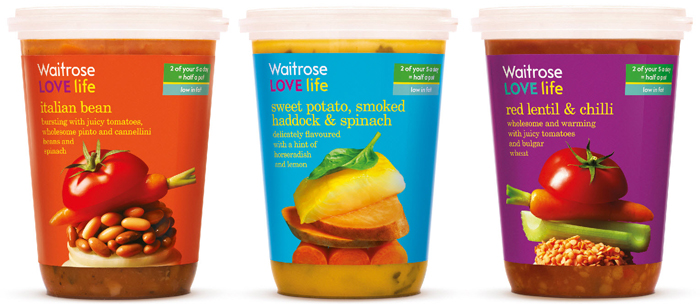![]()
You are welcome to share your thoughts on this article written by Darren Foley, Managing Director at Pearlfisher, London
The news at the start of last week focused on the fact that global fast-food giant McDonald’s is introducing calorie labelling onto their UK menus. A responsible move? Well, yes, especially as the majority of consumers are still ignorant—or should that be ill-informed—when it comes to the calorific value of their food and keeping within the recommended daily amount.
But actually, fat, salt and sugar content is as important—if not maybe more—than just calculating calories when it comes to our long-term health and wellbeing. And it is interesting to note, once you dig deeper, that whilst McDonald’s have signed up to the voluntary Department of Health calorie display programme and also promised to remove artificial trans fats from its products, it did not sign up to a salt reduction pledge. And, I think that this new brand stamp for McDonald’s is actually providing somewhat of a confusing and retrograde step in its brand communication.
It is apparent that McDonald’s has recently invested heavily in both their above and below the line activity—with the UK TV advertising in particular—depicting a healthy and active lifestyle and detailing their commitment to only using premium British beef, free range eggs, less additives etc. all presumably in an attempt to change public perception about the brand and its staple offers. The brand has adopted a creative language that has become more informal, engaging and attractive in an attempt to entice customers in on a more regular basis. Yes, it’s great that they have become more transparent and informative but listing calorie values now is surely a case of shutting the stable door after the horse has bolted? According to the new calorie count, a burger, fries and fizzy drink makes up half of the recommended daily calorie intake (for an adult) and so should, of course, be an occasional treat and not part of a daily—and ‘healthy’—food choice as the previous communication had been (subliminally) expounding. However, whilst the communication was potentially misleading, and maybe promoting too much of the good v not enough of the bad messaging, it did, at least, reflect the needs and desires of today’s consumer.
Whilst I made the point in my previous article for Popsop that information design is very much coming to the fore and is a clear and concise way of communicating with today’s consumers, McDonald’s move from engaging and informal to such a specific and prescriptive communication provides confusing messaging for the consumer. It is pulling us back into the mindset of almost a ‘Nanny State’ and also conflicts with—and is sharply highlighted against—the progressive journey and health evolution that we are now seeing at the other end of the health food spectrum with our supermarkets and private label.
As health brands per se moved from their worthy roots—and aesthetic—and started to become more established in the leading multiples, so retailers responded by upping their branding to find a way to create differentiation. Design started to try to communicate the brand values more and more. But this meant that the healthy food landscape became more like a battle of the brands and design was led by logo and brands shouting health through dominant, directive and often generic visual and written cues—and this is where McDonald’s now seems to be slotting itself in.
Brands do need to comply with the tighter restrictions on food labelling being imposed by the Government but they are also feeling the pressure to look for their own initiatives. However, it’s interesting that McDonald’s new dictatorial role is actually mirroring where private label was quite a few years ago. And maybe what is more interesting is to look at just what’s happening in this sector now and what brands such as McDonald’s could maybe be emulating and buying into in an attempt to really connect with today’s consumer…What people really want—and need—is a better and more personal connection and people are becoming more attracted to individual and personality led brands. As a result, we are starting to see a new breed of food brands and ranges emerging that are more about individual expression and emotionally led branding. And whilst McDonald’s will never be the healthy option, this is exactly where McDonald’s seemed to be heading previously with its communications campaign…
Waitrose, for example, has introduced a new range of delicious and nutritionally balanced foods called LOVE life. The vibrant and colourful naming and design expression is about bringing taste and vitality together to create an experience of freedom, choice and pleasure. It is celebrating health and wellbeing as a positive part of consumers’ individual lives and lifestyles—and not the lifestyle dictated by the parent brand. And this liberation and celebration is a world away from the dictatorial approach that consumers have inevitably moved on from—and where McDonald’s has maybe made a wrong move. Above all, this new approach is expressive and provides the new experiential and emotional connection that consumers are looking for—not just with health but—on an holistic level with their chosen food brands, its manufacturers and retailers.
About the Author
Darren Foley, Managing Director at Pearlfisher, London, joined the company in 2002 as Realisation Director, inventing the concept of realisation and advocating a design process in which our technical and creative teams work in harmony from the beginning. He has worked in the design industry for close to 25 years, starting out as a junior production artist, and amassing an unparalleled depth of knowledge for the discipline.


